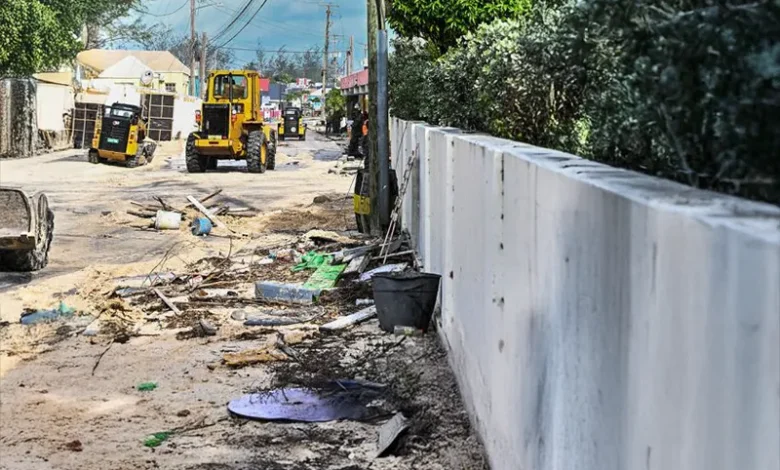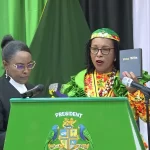Dominica’s National Disaster Risk Management Framework

Dominica’s National Disaster Risk Management Framework is a comprehensive system that strengthens the island’s resilience against man-made and natural disasters. Dominica has developed robust strategies to effectively manage disaster risks as a small island developing state vulnerable to landslides, flooding, earthquakes, tropical storms, and hurricanes. This framework integrates legal, institutional, and operational components to ensure coordinated disaster preparedness, response, recovery, and mitigation efforts.
Key Components of the Disaster Risk Management Framework
The framework is anchored by several key institutions, policies, and strategies that collectively work to minimize disaster impacts and enhance national resilience.
1. Institutional Arrangements
- Office of Disaster Management (ODM): The central coordinating body responsible for national disaster risk management activities. It oversees disaster preparedness, response operations, early warning systems, and recovery planning.
- National Emergency Planning Organization (NEPO): A multi-agency body that coordinates disaster response efforts. NEPO comprises representatives from government ministries, security forces, private sector entities, and non-governmental organizations, ensuring a whole-of-society approach to disaster management.
- Climate Resilience Execution Agency for Dominica (CREAD): Established post-Hurricane Maria, CREAD focuses on long-term resilience building, climate change adaptation, and sustainable development to reduce vulnerability to disasters.
2. Legal and Policy Frameworks
- Disaster Risk Management Act: The primary legislation governing disaster risk reduction (DRR) and emergency response. It outlines the roles and responsibilities of government agencies and defines protocols for managing national emergencies.
- National Climate Change Adaptation Policy: This policy guides Dominica’s efforts to address climate-related risks through sustainable land use, ecosystem management, and community resilience programs.
- Low Carbon Climate-Resilient Development Strategy: Focuses on integrating disaster risk reduction and climate change adaptation into national development plans.
3. Disaster Preparedness and Response Strategies
- Early Warning Systems: Advanced meteorological and communication technologies are employed to provide timely hazard alerts, enabling communities to take protective actions before disasters strike.
- Community-Based Disaster Risk Management (CBDRM): Emphasizes local-level preparedness through village councils, community emergency response teams (CERTs), and public awareness campaigns. Facilities like the Kalinago Territory Multipurpose Center and Emergency Shelter play critical roles in community resilience.
- Emergency Operations Centers (EOCs): Established at national and district levels to coordinate disaster response, resource allocation, and communication during emergencies.
4. Recovery, Rehabilitation, and Risk Reduction
Post-disaster recovery is guided by structured rehabilitation programs focusing on rebuilding climate-resilient infrastructure, restoring livelihoods, and addressing the psychosocial needs of affected populations. Risk reduction initiatives include:
- Climate-Resilient Housing Projects: Construction of hurricane-resistant homes and retrofitting vulnerable structures.
- Ecosystem-Based Adaptation: Restoration of mangroves, forests, and watersheds to mitigate flood and landslide risks.
- Sustainable Land Use Planning: Integration of hazard risk assessments into development projects.
International Partnerships and Support
Dominica’s disaster risk management framework is supported by partnerships with regional and international organizations, including:
- Caribbean Disaster Emergency Management Agency (CDEMA): Provides technical assistance, capacity building, and regional coordination during disasters.
- United Nations Development Programme (UNDP): Supports disaster risk reduction, climate adaptation projects, and post-disaster recovery efforts.
- World Bank and International Donors: Offer financial and technical support for resilience-building projects, such as the Emergency Agricultural Livelihoods and Climate Resilience Project (EALCRP).
Moving Towards a Resilient Future
Dominica’s commitment to strengthening its disaster risk management framework reflects the nation’s proactive approach to safeguarding its people, environment, and economy. By integrating community involvement, robust legal frameworks, and international partnerships, Dominica continues to build resilience against the increasing threats posed by climate change and natural disasters. The framework’s emphasis on preparedness, rapid response, and sustainable recovery ensures that the nation is better equipped to face future challenges while fostering a culture of safety and resilience for generations to come.




